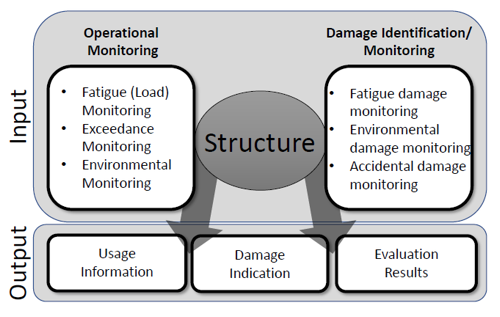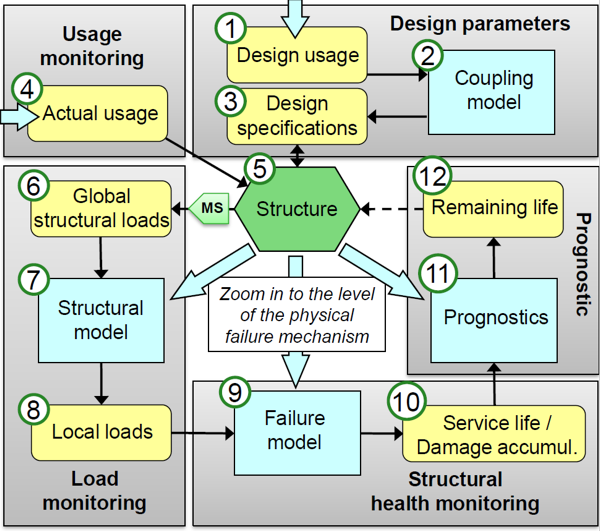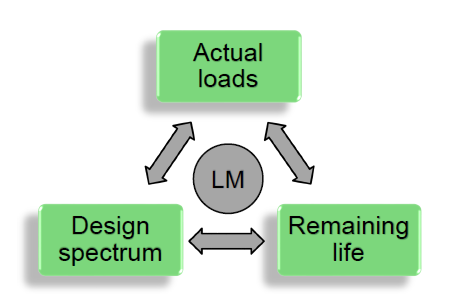Robin Boom - Fokker Landing Gear (October 2016 – May 2017)

Link to report in UT repository: http://purl.utwente.nl/essays/72412
SUMMARY
Fokker Landing Gear B.V. (FLG) in Helmond produces several types of landing gear components. For these components FLG is interested in the applicability and integration of a relative new in-flight monitoring technique, which involves the concept of Structural Health Monitoring (SHM) on a Landing Gear (LG).
The main goal of this research was to investigate how traditional Non-Destructive Inspection (NDI) techniques could be replaced by in-flight monitoring systems. Different monitoring approaches and the possibility to integrate these in aeronautic applications were investigated (See figure 1). Part of this research was to investigate whether it would be allowed by the authorities to apply Structural Health Monitoring (SHM) in aeronautic applications. The requirements compiled by the SAE in report ARP6461 show that this is allowed.
Figure 1: Potential functional requirements of an SHM system
Aspects which required special attention were the failure mechanisms of metal as well as composite LG components and how these components are currently inspected by Non-Destructive- Inspection techniques. Metal LG components are critical to fatigue and composites will be critical to damage growth after the presence of damage caused by an impact. This revealed two types of failure parameters; loads and damage. In order to monitor these parameters, different monitoring techniques are required. Although a lot of advancements are currently being made in the field of damage identification, there is still a lack in damage identification techniques which can detect damage in thick walled structures. This means that the intended functions of SHM cannot be applied to LG’s yet.
KEY RESULTS
The focus of this research was shifted from specific applications towards the development of a flow chart (see figure 2) that represents a general foundation for a monitoring system for LG’s. By following all steps in this flow chart, the end-user can benefit in terms of extended maintenance intervals and a determination of the amount of remaining life (see figure 3). The original equipment manufacturers such as FLG can use this approach by validating the design spectrum, to improve future designs. This report does not only elaborate on the sensing techniques, but also on the essential data conversion steps to link the actual usage to an amount of remaining life.

Figure 2: flow chart for a multi purpose monitoring scheme, with MS functioning as the intended position of a monitoring system
A case study showed the working principles of the developed monitoring flow chart. Within this case study, the required conversion steps and models for a load based monitoring scheme were shown. Data from real fatigue tests was used as an input for the monitoring system. Hence, it was possible to compare the design usage with actual usage. From this research, it became clear that it would be ideal to be able to use Load Monitoring (LM) as well a SHM on an LG. This would provide even more valuable structural information. The results from this report can be used as a foundation for future research in the field of monitoring applications.

Figure 3: Beneficial relations obtained from the building block approach in combination with Load monitoring
